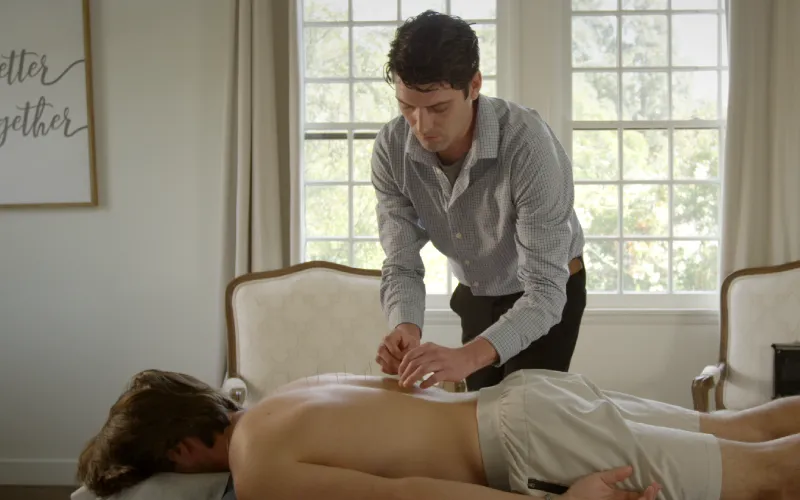
Table of Contents

Millions of people in the United States struggle with substance use. In addition, millions also struggle with their mental health, and there is a lot of overlap between the two groups.
Mental health and addiction treatment programs come in a variety of forms. Most people might picture inpatient care as living in a treatment center for weeks.
However, there are other treatment programs available that can help people with their concerns. One of those is an intensive outpatient program or an IOP.
But how much does an IOP cost? Treatment costs can often keep people from seeking the help that they need, and covering the cost of addiction and mental health treatment can be a major concern for people who need support.
What is an IOP?
An IOP is a form of outpatient care wherein a person attends multiple individual and group therapy sessions per week. In this form of treatment, a person does not have to live in a treatment facility, and they fit their treatment sessions into their normal, day-to-day lives.
IOP treatment can be an alternative to inpatient care, especially for those with mild to moderate needs. However, it can also serve to complement residential treatment as people who complete an inpatient program can transition to an IOP treatment program.
How Much Does an Intensive Outpatient Program Cost?
The cost of intensive outpatient programs can vary from one treatment provider to another. The average cost is usually between $500 to $650 a day, but some programs come at a higher cost, and some programs can charge lower fees.
Does Health Insurance Cover IOP Costs?
IOPs are considered healthcare. Because of this, insurance plans cover them. However, the scope of support a person gets from their insurance can vary based on the plan, the provider, and the network.
Generally, it’s best to thoroughly review insurance coverage to get an accurate estimate of the total cost before seeking treatment.
What Factors Affect the Cost of Intensive Outpatient Treatment?
Several factors can influence the cost of treatment. One of the most significant factors is the program duration.
People who need more time with treatment will have to pay more than those who don’t need as much time. Generally speaking, IOPs can last between 2 weeks to 3 months, though some can go on for longer for those who may require more intensive treatment.
Another factor that can affect the overall cost of treatment is the scope of services offered in a treatment plan. Some IOPs can include a wide range of services in addition to therapy, such as holistic treatments, family counseling, and medication management.
The facility a person goes to for treatment will also influence the cost of care. Treatment options in areas with high living costs, such as major metropolitan areas, high-end neighborhoods, or both, will charge higher prices to cover overhead costs. Treatment facilities with minimal amenities or in lower-cost areas will charge less for their outpatient services.

Paying for IOP Without Insurance
Health insurance plans generally cover the cost of treatment. However, many health insurance plans may not cover all of the costs, or a person may need treatment that is not in-network, which means that a person will have to pay for the cost of care entirely out of their pocket. Again, it’s best to verify your insurance to minimize out-of-pocket costs.
These out-of-pocket costs can be more than many people can afford, so some people may have to cover the cost of IOP. This money can be borrowed from loved ones or financial institutions.
Some charitable organisations offer financial assistance programs to help people cover the cost without insurance providers.
Some IOPs offer sliding scale fees or payment plans so a person doesn’t have to pay for the full cost of a program all at once. These can help people get the help they need at a more financially accessible rate.
Is an IOP Worth the Cost?
Regardless of how much an IOP costs, the program can still be a major part of mental health and addiction treatment. When a person leaves a treatment center, they will likely continue to need support. An IOP can offer them that support while giving them the ability to return to their lives.
Relapse is prevalent in addiction recovery, and an IOP can minimize the risk. Without the support that an IOP can provide, some people who are in recovery can relapse.
Outpatient programs, including IOP, can help people manage their mental health when they are not in a treatment center. Continued support can help people manage their symptoms, allowing them to build a life where they are not brought down by their symptoms.

The Benefits of Intensive Outpatient Programs
IOPs can have numerous benefits for people who struggle with mental health or addiction. Those with mild to moderate disorders can get intensive support without having to put their life on hold to check into a treatment center.
A major part of mental health and addiction treatment is developing healthy coping skills. By allowing a person to leave home after treatment sessions, they can find themselves able to practice these coping skills in the real world.
While an IOP is flexible, it is still structured. There is a clear treatment plan that lays out a path to recovery. This can help people learn how to manage their lives better when they are no longer in a controlled environment.
Seek Outpatient Treatment
How much does an IOP cost? It’s generally best to cover IOP costs with insurance coverage, but even if that is not an option, an IOP is still worth it. It can help you or your loved one find a path towards recovery.
The cost of outpatient treatment can be high. However, the cost of not getting treatment can be more dire than just money. Without continued support, many people can find their cravings and symptoms spiraling out of control.
There are various options, including IOP, available, and a treatment program can meet your specific recovery needs.








































